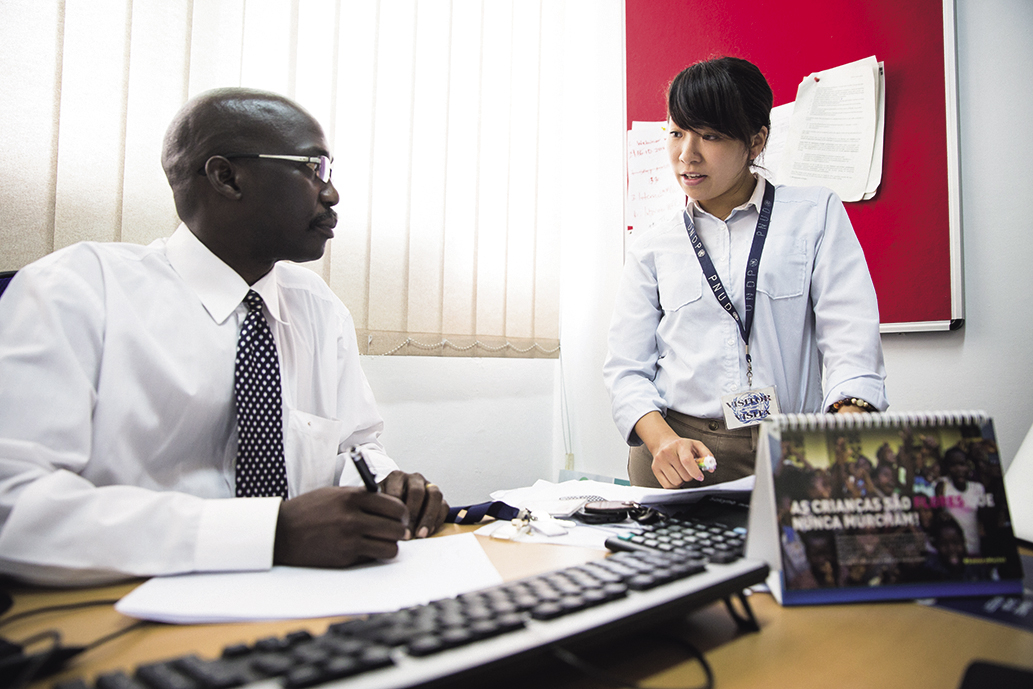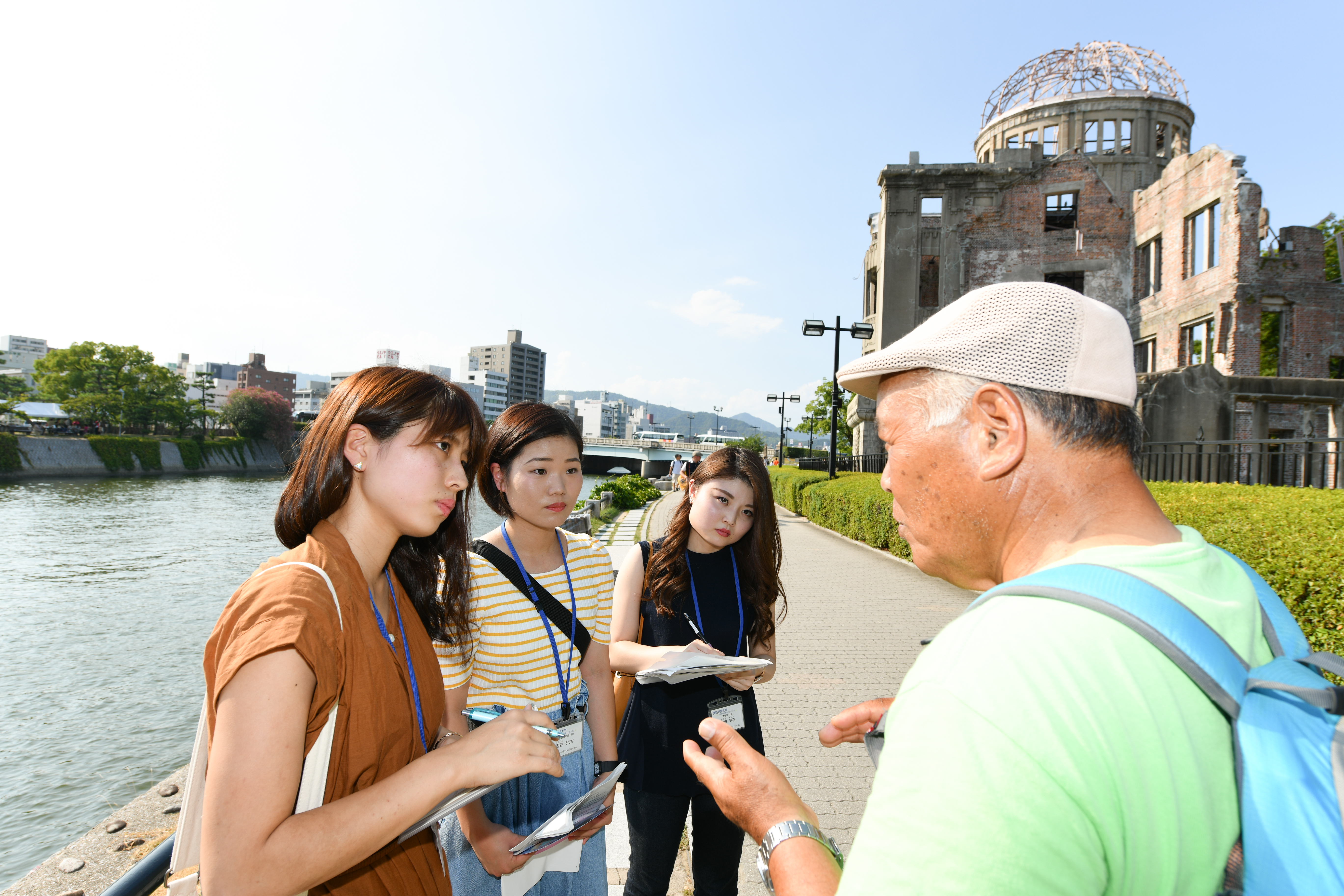Unique Learning at KGU
1) AI Solution Architect Training Program
As we move forward, society will not require experts in AI technology, but people who are able to understand and take advantage of AI and related technology, regardless of whether they are educated in liberal arts or the sciences. With this in mind, KGU has defined “AI Solution Architects” as “personnel who possess knowledge related to AI and data science and the ability to apply that knowledge in corporate activities, business management, and other areas to resolve a variety of real-world problems,” and set the development of such personnel as the objective of the AI Solution Architect Training Program.

The personnel involved in AI can be broadly divided into three categories. These are AI researcher-developers, who are involved in the R&D of leading-edge AI technologies themselves; AI users, who use AI to solve problems on the ground or to create new services and products; and AI specialists, who provide solutions for AI users. With many companies in many different fields actually needing AI technology and demanding AI solutions, the high-volume zone for personnel demand would be in the two categories. AI users and AI specialists do not necessarily need to be fully conversant with the advanced mathematics and programming technologies that are the foundation of AI technology. We made the bold decision to keep that basic knowledge of AI technology to a minimum in the program, and to focus on the skills needed to make use of AI.
The AI Solution Architect Training Program has the following three main benefits. Firstly, the content of the classes has been developed with beginners in mind. Using a curriculum that starts with the basics and gradually accumulates more knowledge, the class is designed in such a way that students can learn well even if they are without any prior background knowledge. The second benefit is the “systematic acquisition of practical skills.” The program has been structured as a self-contained course, in which AI application skills can be acquired simply by completing the series of subjects contained in the program. It also features many practical exercises that are based on real-world situations, which will enable students to acquire practical skills in a systematic manner. The third benefit is the “cultivation of business perspectives.” The classes incorporate the practical business perspectives of companies that use AI, such as IBM. With numerous Project-Based Learning (PBL) exercises based on actual cases, students who take the program will acquire job-ready skills for a business environment.
2) UNYV
In the United Nations Youth Volunteers (UNYV) Program, participants carry out their assigned missions as members of the growing network of UN offices around the world. It is a formally offered program targeted at students who want to work at an international organization or who want to try living and working in a developing country in the future, as well as students who want to test themselves in a global environment, which includes being active in the business world. Among the wide variety of international education programs at universities in Japan, the UNYV Program is definitely one of the most challenging Programs. In recent years, there have been quite a few students who entered Kwansei Gakuin University with the aim of joining this program.

However, joining the UNV Program is not as simple as having English language skills and good grades. A high level of expertise is demanded by the international organizations at the dispatch destinations for UN Youth Volunteers. In addition, the environment in developing countries differs from Japan, is sometimes accompanied by risks to health and safety, and can be stressful. In order to overcome these sorts of trials, participants need the mental and physical toughness to be true to themselves.
Other than regular UN staff, there are many volunteers working at the UN. These volunteers engage in over 100 sorts of assignments, including UN peacekeeping operations, agriculture, education and medical treatment. UNV is the agency responsible for dispatching these volunteers and coordinating their activities. Through this coordination by UNV, students are dispatched to UN-affiliated organizations across Asia, Oceania, Africa and other regions. The reason that student volunteers have been focused on in the first place is because there has been a surge in assignments involving computer use, as well as public relations and other work done through the Internet, even in developing countries. In 2004, acknowledging the idea of the UN Secretary-General at the time, the United Nations Information Technology Service (UNITeS) was launched. Kwansei Gakuin University joined this landmark program, and was the third university in the world to do so. Afterward, alone among Japanese universities, Kwansei Gakuin University continued its efforts to send volunteers abroad through the UNYV Program.
In 2013, KGU enlisted the cooperation of the Ministry of Foreign Affairs (MOFA), and the UN Youth Volunteers consortium was formed. In the fierce competition between top Japanese universities who are conducting internationalization efforts, all vying to be selected by the UN, KGU students have constantly maintained their position at the head of the pack.
In recent years, tasks like updating websites, social media advertising, PR activities and event planning/management have become central to the work that students are required to do. In addition to obtaining language skills, as well as knowledge in fields such as international development and IT, students work diligently to develop a track record through work like creating their own web pages, in order to make it through the highly competitive UNV selection process. Some students who have gone through the process have said it was the hardest they’ve ever had to study. After making it through the strict selection process, receiving opportunities to participate in the program, and rising above difficult conditions to complete their work in the field, all of the students return to Japan, having matured greatly. The UN Youth Volunteers Program is exactly the sort of practical endeavor that awakens students’ awareness as Global Citizens.
3) Entrepreneurship
Nowadays, both large companies and investors are competing for college students with entrepreneurial experience. The Kwansei Gakuin Startup Academy is a program in which students can learn management skills and gain real entrepreneurial experience. In each “season,” students create their own business plan, receive advice from senior business managers, and aim to actually launch a business and generate profits. At the end of each season, students prepare for the next season by presenting their profit ranking and reviewing their business.

For three seasons, students at the Startup Academy learn management skills thoroughly by repeating the process of creating and practicing business plans a total of three times. In the final season, students will create a business plan that they would like to work on after the completion of the course, and receive advice from mentors to refine their plan, thereby realizing a state in which they are “ready to start a business at any time.” Upon completion of the course, students will be able to step out into the real world and start their own business.
4) Hands-on
The Hands-on Learning Program is one of the three programs in the Dual Endeavor Program, a pillar of the SGU project. Hands-on Learning is education that begins with “first contact.” Even if something cannot be directly experienced, understanding may be reached through proximity. Feeling the urge to learn and communicate more deeply can be a real thrill. One example of ongoing learning is fieldwork in Etajima, Hiroshima (hereafter, Etajima FW) as part of the Social Exploration Practicum course.

Hands-on Learning courses can be divided into two major categories: the career type and the social exploration type. However, there is no difference in their emphasis on going into the field. The Social Inquiry Practicum - a continuation of the Introduction to Social Inquiry course - tackles topics such as peace, the environment, and the community, which are extremely difficult but need to be reflected on. Among those topics, the Etajima FW is an important subject that was created from the history of cooperation between Kwansei Gakuin and Hiroshima, which began with Reverend W.R. Lambuth’s missionary work in Seto. It is also linked with the Peace Studies Special Seminar Hiroshima FW (hereafter, Peace Studies Hiroshima), which started with the goal of re-examining the relationship between KGU and Hiroshima, and has had a history for 15-some years.
First, by spending time in Hiroshima around August 6th, the students see various events and people around Hiroshima. August 6th has a powerful impact on them, and the question for the students is how they will digest that impact. The Peace Studies Hiroshima course comes to an end with that question lingering in their minds. After the students have strolled around the Peace Park, they cross over to Etajima and reflect on what they previously learned. As they look at Hiroshima, which housed the Army, and Kure, which housed the navy, they think about what it was like in those days on Etajima, which was once home to a naval academy. The next day at Honkakuji (in Tsukumo, Etajima), the students read through the Tsukumo-cho, a text composed by the naval academy students during their brief holidays, and start fieldwork in the afternoon. They listen to stories from bereaved family members, as well as people who conducted business around the naval academy, about what life was like back in those days.
The Hands-on Learning Program is one of the three programs in the Dual Endeavor Program, a pillar of the SGU project. Hands-on Learning is education that begins with “first contact.” Even if something cannot be directly experienced, understanding may be reached through proximity. Feeling the urge to learn and communicate more deeply can be a real thrill. One example of ongoing learning is fieldwork in Etajima, Hiroshima (hereafter, Etajima FW) as part of the Social Exploration Practicum course.




